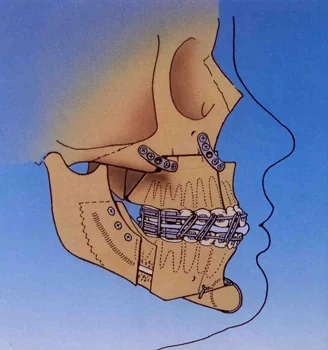Cleft and Craniofacial Surgery
Services
Treatment offered by Cleft and Craniofacial Surgery is provided by a fellowship trained, board certified surgeon, Dr. Mechas, along with support and availability of a multidisciplinary team including speech and language therapists, pediatric dentists, orthodontist, head shape therapist, ear, nose and throat physician (ENT), and others. Emphasis is placed on long term patient care and at minimum yearly follow-ups through growth and development.
Full scope cleft lip, cleft palate, and craniofacial anomaly care is provided with a team approach and multidisciplinary coordination to address all of your child’s needs. This includes therapies and procedures throughout growth aimed at correction and coping with the cleft or facial deformity.
Surgical treatment includes primary lip and palate repair, distraction osteogenesis of the jaw and skull, speech surgeries, alveolar cleft bone grafting, corrective jaw surgery, rhinoplasty, temporomandibular joint (TMJ) reconstruction, dental extractions, treatment of head and neck pathology/tumors, and other facial and oral procedures.
Conditions treated include:
- Cleft lip
- Cleft palate
- Pierre Robin Sequence
- Syndromic conditions (Apert’s, Crouzon’s, Goldenhaar, Hemifacial Microsomia, Treacher Collins)
- Craniosynostosis (skull deformity)
- Jaw deformity
- Malocclusions
- Jaw joint problems
- Velopharyngeal (speech) insufficiency
- Oral and facial lesions, cysts, and tumors
- Sleep apnea surgery
- Dental implants and dental extrations
Scheduling
You call us at 901.448.6234.
Fax us at 901.448.2032
Locations
Dunn Building
875 Union Avenue
Memphis, Tennessee 38163
Referral Form
Frequently Asked Questions
- Cleft lip and cleft palate are birth defects that occur when a baby's lip or mouth do not form properly.
- These happen early in pregnancy, no one knows the exact cause
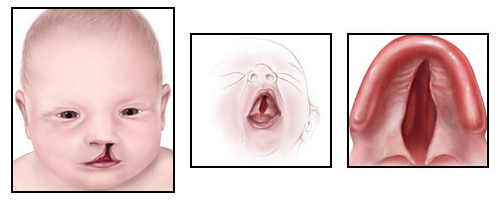
- Lack of fusion between median nasal process and maxillary process equal a cleft lip
- Lack of fusion between palatal shelves and nasal septum equal a cleft palate
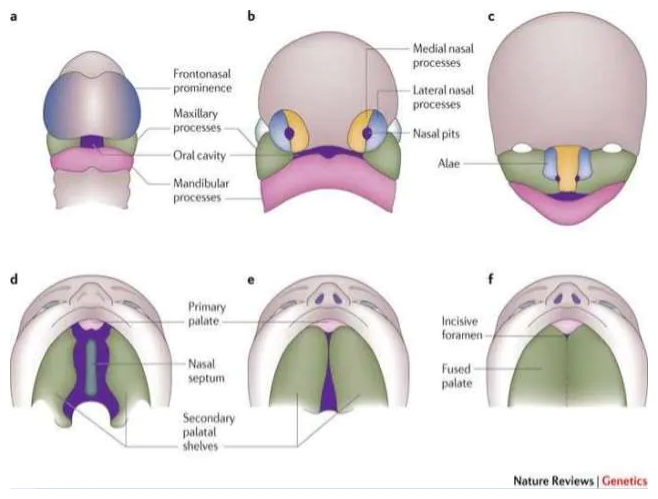
- Frontonasal prominence
- Maxillary processes
- Oral cavity
- Mandibular processes
Top center is diagram b. Starting from left most column to right, top to bottom:
- Maxillary processes
- Oral cavity
- Mandibular processes
- Medial nasal processes
- Lateral nasal
- Nasal pits
Top right is diagram c. Starting from top to bottom:
- Alae
Top right is diagram d. Starting from top to bottom:
- Primary palate
- Nasal septum
- Secondary palatal shelves
Top right is diagram e. Starting from top to bottom:
- Primary palate
- Secondary palatal shelves
Top right is diagram f. Starting from top to bottom:
- Incisive foramen
- Fused palate
- Premature fusion of one or more skull sutures
- Fusion restricts growth perpendicular to suture
- Growth then occurs parallel to sutute to acommodate brain growth
- This results in abnormal head and facial shape
- Can lead to developmental delay and other neurological symptoms
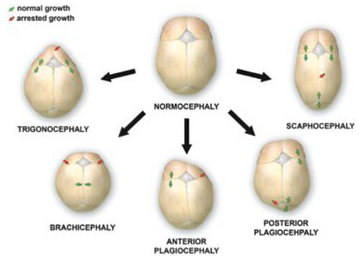
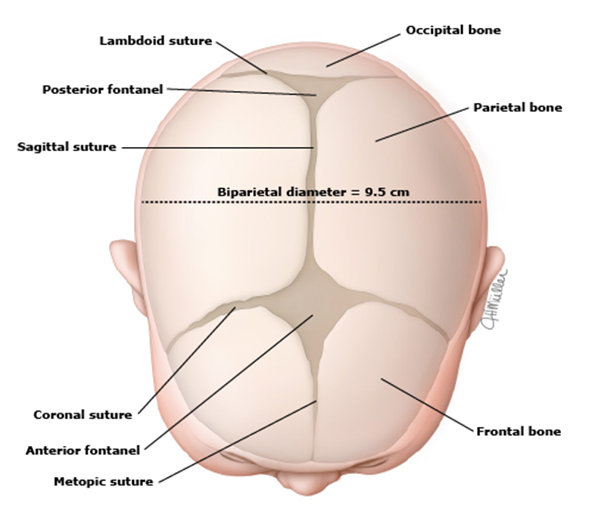
| Stage | Timeline |
| Lip repair | < 6 month |
| Palate closure | < 2 years |
| Pharyngoplasty (Speech Surgery) | 4 – 6 years |
|
Alveolar cleft bone grafting |
7 – 12 years |
| Orthognathic surgery (Jaw Surgery) | 14 – 18 years |
| Revision cheiloseptorhinoplasty Final Cosmetic Lip and Nose Surgey |
17 – 20 years |
- Orthognathic, or jaw surgery, is surgery performed to correct combined skeletal (bone) and dental (teeth) malposition or deformity
- Surgery performed using extensive planning in order to move the jaws in 3-dimensions
- Typically performed when braces alone can't put the teeth into their ideal or best positions
- Also used to improve facial appearance and profile
- Fixes "underbites", "overbites", and open bites
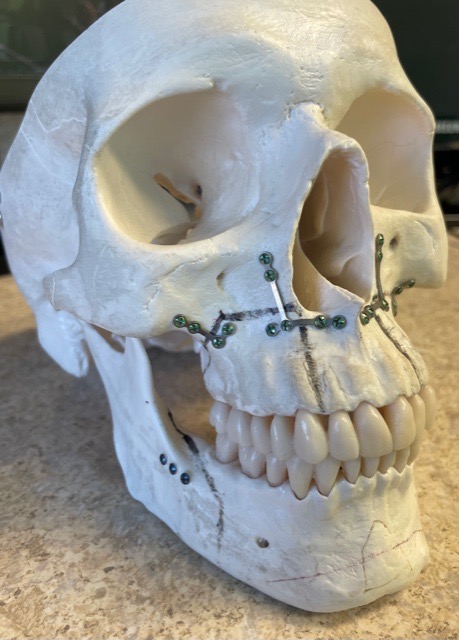
Anatomical skull showing titanium plates and screws that might be used during orthognathic surgery.
Sideview of skull and face showing titanium plates and screws that might be used during orthognathic surgery.

